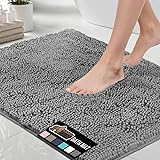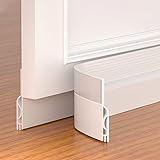Beyond Aesthetics: Unmasking Non-Negotiable Interior Design Mistakes
Ever walked into a beautifully decorated room, only to find yourself tripping over a coffee table, squinting at mismatched light, or struggling to pull out a dining chair? It’s a common scenario, and it highlights a crucial distinction in interior design: the difference between subjective style choices and fundamental, non-negotiable blunders. While personal taste dictates trends like farmhouse chic or minimalist aesthetics, some aspects of design simply transcend opinion.
As discussed in the video above, there are certain interior design mistakes that aren’t merely a matter of preference; they actively undermine the functionality, comfort, and safety of a space. These aren’t about whether you prefer glossy paint or open shelving. Instead, they delve into the core principles that make a home truly livable. Let’s delve deeper into these crucial areas, ensuring your space is not just beautiful, but brilliantly designed.
1. The Head-Scratcher: Mismatched Lighting Temperature
Imagine a room where a warm, inviting table lamp casts a cozy glow, while the overhead fixture blazes with a stark, cool white light. The result isn’t a harmonious blend; it’s often a jarring visual headache that can negatively impact your mood and perception of the space. This clash of lighting temperatures is a classic, yet often overlooked, non-negotiable interior design mistake.
Understanding lighting temperature is key. Warmer lights, typically ranging from 2700K to 3000K (Kelvin), emit a soft, yellowish glow reminiscent of incandescent bulbs or candlelight. These are ideal for creating a relaxing, residential atmosphere. In contrast, cooler lights, often 4000K to 5000K and above, emit a brighter, whiter, or even bluish light, commonly found in commercial settings, garages, or hospitals. The error lies not in choosing one over the other, but in failing to maintain consistency within a single room. Uniformity in lighting temperature ensures visual comfort and allows other design elements to shine without competition. Selecting a consistent Kelvin temperature for all light sources within a given area creates a cohesive and inviting ambiance.
2. The Obstacle Course: Improper Furniture Clearances
A stunning sofa or an elegant dining table loses all its appeal if it renders your room impassable. One of the most common functional interior design mistakes is failing to account for proper furniture clearances. This isn’t just about aesthetics; it directly impacts how you move, live, and interact within your home.
The cardinal rule is to furnish for the space you have, not the space you wish you had. Furniture that is too large forces residents and guests to “shimmy” through narrow gaps, creating frustration and a sense of crampedness. Conversely, pieces that are too small can make a large room feel empty and disproportioned. Practical guidelines are essential here: aim for 12 to 18 inches of clearance between your sofa or chairs and a coffee table, allowing comfortable access to drinks and magazines without hindering movement. Similarly, ensure dining chairs can be pulled out fully without hitting a wall or another piece of furniture. Prioritizing flow and accessibility transforms a potentially beautiful but dysfunctional room into an efficient and comfortable living area.
3. The Annoying Collision: Door and Cabinet Clearances
Beyond the main furniture pieces, the smaller, more frequent interactions with your home’s built-in elements demand equally precise planning. Think about that kitchen drawer that collides with the dishwasher door, or a bathroom door that perpetually bumps into the toilet. These are not minor inconveniences; they are design failures that lead to daily frustration and can even damage your fixtures over time.
Proper clearances for doors and cabinets are crucial for smooth daily operation. When designing or renovating, meticulous measurements are paramount. Ensure kitchen drawers can fully extend without hitting adjacent appliances or other cabinet doors. Similarly, check that appliance doors (like refrigerators or dishwashers) have enough room to open completely without obstruction. This extends to media consoles, bar cabinets, and even bedroom closet doors. Such attention to detail in space planning ensures every functional element of your home works seamlessly, eliminating those annoying daily collisions that highlight poor design.
4. The Functional Flaw: Choosing the Wrong Material for Its Function
While a material might look fantastic, its suitability for a particular environment or purpose is a non-negotiable aspect of good design. Selecting materials solely for their visual appeal, without considering their practical implications, is a significant interior design mistake that can lead to premature wear, hygiene issues, or even safety hazards.
Consider kitchen countertops: quartz, a popular choice, is durable but less heat resistant than natural granite. Placing a hot pan directly from the oven onto a quartz surface can scorch the resin binder, causing irreversible damage. If you’re an avid cook who frequently works with high temperatures, granite or soapstone might be more appropriate, or you must commit to consistently using trivets. Another common misstep is using carpet in bathrooms, a humid environment where mold and mildew thrive, posing hygiene and health concerns. Similarly, certain wallpapers may not withstand the moisture levels of a primary bathroom, leading to peeling. For showers, while large format tiles can look sleek, they must be slip-resistant to prevent accidents. Always consult manufacturer guidelines and consider the room’s specific function and environmental conditions before committing to a material. Durability, maintenance, and safety should always precede mere aesthetics.
5. The Ergonomic Error: Things That Are Too High or Too Low
Good design operates in three dimensions, and ignoring the vertical plane can lead to discomfort and visual imbalance. Furniture that is difficult to use because of its height, or art and TVs hung improperly, represents a fundamental interior design mistake that compromises both ergonomics and aesthetics.
When selecting furniture, consider its relationship to human interaction. Low-slung pieces, while stylish, can be challenging for many individuals to get in and out of comfortably, particularly for older adults or those with mobility issues. A general rule for coffee tables is to match the height of the neighboring sofa or chair seats, ensuring ease of access for placing or retrieving items. Similarly, the placement of TVs and artwork demands careful consideration. While a TV above a fireplace might seem appealing for a focal point, if it forces viewers to crane their necks at a steep angle, especially in smaller rooms, it becomes dysfunctional. For art, a widely accepted guideline suggests hanging the center of the piece between 57 to 60 inches from the floor. This height accommodates the average human eye level, allowing viewers of varying heights to comfortably appreciate the art without strain. Furthermore, excessively high storage that is rarely accessible also falls into this category, rendering it impractical and inefficient. Thoughtful consideration of height ensures a comfortable and visually harmonious space for everyone.
6. The Costly Oversight: Buying Without Measuring
In an age of online shopping and inspiring home decor stores, it’s tempting to fall in love with a piece and purchase it on impulse. However, the failure to measure your space and the prospective item is arguably the most fundamental and avoidable interior design mistake. This oversight frequently leads to ill-fitting furniture, awkward layouts, and often, expensive returns or regrets.
Before any significant purchase, especially for large furniture pieces, take precise measurements of your room, including doorways, hallways, and potential obstacles. Consider not just the item’s footprint but its height, depth, and how it will interact with existing elements. Visualizing the piece in your space can be aided by techniques like using painter’s tape on the floor to outline dimensions, or even creating cardboard cutouts. This simple act of “measure twice, buy once” prevents the frustration of a beautiful sofa that obstructs a doorway or a dining table that leaves no room for chairs to be pulled out. Informed purchasing ensures that every item contributes positively to the functionality and flow of your home, rather than becoming a regretful impediment.
7. The Critical Blunder: Not Accounting for Hazards
Beyond aesthetics and functionality, the safety and structural integrity of your home are paramount. Overlooking potential hazards in design or renovation is a non-negotiable interior design mistake with serious consequences, far outweighing any stylistic preference. This category moves beyond discomfort into the realm of legitimate danger and costly structural issues.
One common example involves drapery panels and baseboard heaters. While floor-kissing curtains are a popular look, if they come into contact with a heater, they pose a significant fire risk. Furthermore, issues like persistent mold, asbestos, or structural weaknesses (such as a leaking roof) are not “design choices”; they are critical problems that demand immediate attention. While expensive, addressing these hazards is crucial for the health and safety of occupants and the longevity of the property. Building codes and regulations exist precisely to prevent such dangers, and any design or renovation work should always adhere to these standards. Electrical installations near plumbing, open-riser staircases in homes with young children or elderly residents, and inadequate safety rails are all examples where aesthetic desires must yield to fundamental safety requirements. A truly well-designed home is first and foremost a safe one.











